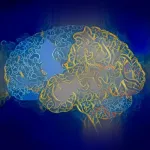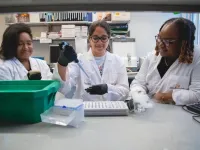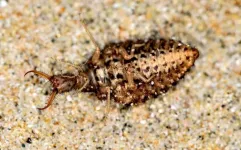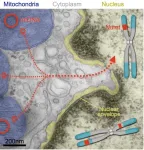(Press-News.org) A new machine learning analysis has revealed the most effective climate policies out of 1,500 implemented worldwide over the last two decades. Some of the success stories – numbered at about 63 – involve rarely studied policies and unappreciated policy combinations. “Our results provide a clear yet sobering perspective on the policy effort necessary for closing the remaining emissions gap of 23 billion tons carbon dioxide (CO2) by 2023,” write the authors. To achieve the Paris Agreement’s climate targets, it is essential to know which climate policies work effectively at scale. However, despite the implementation of thousands of climate policies worldwide over the past two decades, there is little consensus on which policies are most effective. This emphasizes the need for a detailed global assessment. Here, Annika Stechemesser and colleagues provide insights from an evaluation of 1,500 climate policies that were implemented across 41 countries between 1998 and 2022. They used data from the climate policy database from the Organization for Economic Cooperation and Development (OECD). They also used a machine learning-based extension of the standard difference-in-differences (DID) approach – a statistical technique used to estimate the causal effect of an intervention (such as a climate policy) by comparing changes in outcomes over time between a group exposed to the intervention and a group that is not.
Stechemesser et al. evaluated the impact of each policy on emissions across different regions and time periods. Out of the 1,500 climate policies, the authors identified only 63 policy interventions that reduced total emissions between 0.6 billion and 1.8 billion tons of CO2. According to the findings, combining various policy instruments is often more effective than using single measures, contradicting claims that policy mixes might be redundant. Effective policies typically involve a mix of subsidies and regulations that address different market failures. Pricing mechanisms excel in industry and electricity sectors, while a combination of incentives and regulations benefits buildings and transportation. In developing countries, pricing was less effective, indicating that initial regulatory and subsidy measures might be necessary. While scaling up successful policies could close the emissions gap, it will require significant additional effort, including a need for further research and improved data.
END
Analysis of 1,500 climate policies reveals only a small fraction achieved significant emission reductions
2024-08-22
ELSE PRESS RELEASES FROM THIS DATE:
Fatty-acid derived polymers yield recyclable and highly versatile adhesives
2024-08-22
Researchers have presented a new family of polymer adhesives that offer a sustainable and recyclable alternative to conventional polymer adhesives and can be used across a wide range of applications, from industrial adhesives to surgical superglues. The new chemical approach to aLA polymerization addresses the performance and environmental challenges of traditional polymers, providing environmentally friendly adhesive solutions. Polymer adhesives are ubiquitous in modern life and are widely used in many medical, consumer, and industrial products. Given this diversity, each adhesive material is often tailored ...
Governance needed to ensure biosecurity of biological AI models
2024-08-22
Concerns over the biosecurity risks posed by artificial intelligence (AI) models in biology continue to grow. Amid this concern, Doni Bloomfield and colleagues argue, in a Policy Forum, for improved governance and pre-release safety evaluations of new models in order to mitigate potential threats. “We propose that national governments, including the United States, pass legislation and set mandatory rules that will prevent advanced biological models from substantially contributing to large-scale dangers, such as the creation of novel or enhanced pathogens ...
Spontaneous transfer of mitochondrial DNA into the nuclear genomes in the human brain over the individual’s lifespan
2024-08-22
Somatic nuclear mitochondrial DNA (Numt) insertions are mito-nuclear gene transfer events that can arise in the germline and in cancer. This study shows that Numt insertions arise spontaneously and accumulate in brain tissues during development or over the human lifespan.
#####
In your coverage, please use this URL to provide access to the freely available paper in PLOS Biology: http://journals.plos.org/plosbiology/article?id=10.1371/journal.pbio.3002723
Article Title: Somatic nuclear mitochondrial DNA insertions are prevalent in the human brain and accumulate over time in fibroblasts
Author Countries: United States
Funding: see manuscript END ...
Cancer drug could treat early-stage Alzheimer’s disease, study shows
2024-08-22
UNIVERSITY PARK, Pa. — A type of drug developed for treating cancer holds promise as a new treatment for neurodegenerative diseases such as Alzheimer’s, according to a recent study by researchers at Penn State, Stanford University and an international team of collaborators.
The researchers discovered that by blocking a specific enzyme called indoleamine-2,3-dioxygenase 1, or IDO1 for short, they could rescue memory and brain function in models that mimic Alzheimer’s disease. The findings, published today (Aug. 22) in the journal Science, suggest that IDO1 inhibitors currently ...
Drugs that improve brain metabolism could help Alzheimer’s patients
2024-08-22
Among the many ways neuroscientists think Alzheimer’s disease may strip away brain function is by disrupting the glucose metabolism needed to fuel the healthy brain. In essence, declining metabolism robs the brain of energy, impairing thinking and memory.
Against that backdrop, a team of neuroscientists at the Knight Initiative for Brain Resilience at Stanford’s Wu Tsai Neurosciences Institute have zeroed in on a critical regulator of brain metabolism known as the kynurenine pathway. They hypothesize that that the kynurenine pathway is overactivated as a result of ...
Life after (feigned) death
2024-08-22
A new study led by scientists from the University of Bristol has revealed what animals do after they have feigned death in order to avoid being killed by a predator and what the context of this behaviour is.
Many animals, as a last-ditch defence, become motionless after being contacted by a predator.
This behaviour is so common that it's recognised in such phrases as “playing possum”. It is even said to occur in humans in extreme circumstances.
In previous studies, carried out by the same team using antlion larvae, scientists noticed that they become motionless after being individually handled.
At one point ...
Fisheries research overestimates fish stocks
2024-08-22
Many fish stocks around the world are either threatened by overfishing or have already collapsed. One of the main reasons for this devastating trend is that policymakers have often ignored the catch limits calculated by scientists, which were intended to be strict thresholds to protect stocks. But it has now become clear that even these scientific recommendations were often too high.
In the European Union (EU), for example, fisheries are primarily managed through allowable catch limits, known as quotas, which are set by the European ...
AI tackles one of the most difficult challenges in quantum chemistry
2024-08-22
New research using neural networks, a form of brain-inspired AI, proposes a solution to the tough challenge of modelling the states of molecules.
The research shows how the technique can help solve fundamental equations in complex molecular systems.
This could lead to practical uses in the future, helping researchers to prototype new materials and chemical syntheses using computer simulation before trying to make them in the lab.
Led by Imperial College London and Google DeepMind scientists, the study is published today in Science.
Excited molecules
The team investigated the problem of understanding ...
Mitochondria are flinging their DNA into our brain cells
2024-08-22
NEW YORK, NY (Aug. 22, 2024)--As direct descendants of ancient bacteria, mitochondria have always been a little alien.
Now a study shows that mitochondria are possibly even stranger than we thought.
Mitochondria in our brain cells frequently fling their DNA into the nucleus, the study found, where the DNA becomes integrated into the cells’ chromosomes. And these insertions may be causing harm: Among the study’s nearly 1,200 participants, those with more mitochondrial DNA insertions in their brain cells ...
Revealing DNA behavior in record time
2024-08-22
“DNA, RNA and proteins are the key players to regulate all processes in the cells of our body,” Leiden Professor John van Noort explains. “To understand the (mis-)functioning of these molecules, it is essential to uncover how their 3D structure depends on their sequence and for this it is necessary to measure them one molecule at a time. However, single-molecule measurements are laborious and slow, and the number of possible sequence variations is massive.”
From decades to days
Now the team of scientists developed an innovative tool, called SPARXS (Single-molecule Parallel Analysis for Rapid eXploration ...




